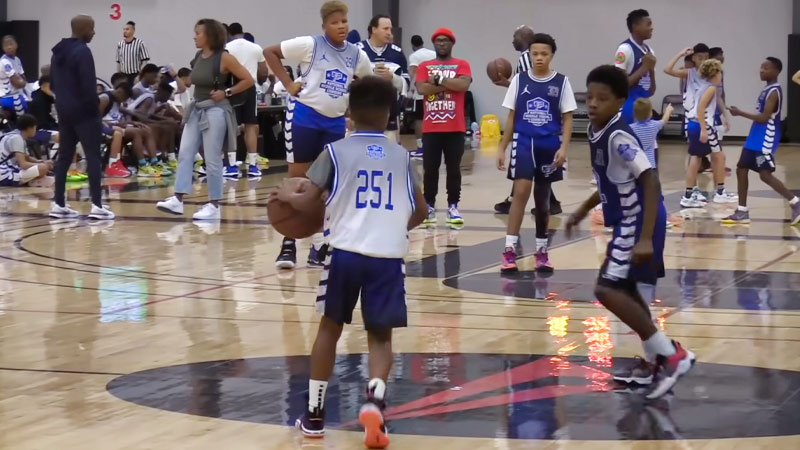Youth basketball is more than just a sport. It’s a thrilling journey that fosters skills, camaraderie, and personal growth. As young players step onto the court, it’s crucial for them to grasp the rules that govern the game.
In this comprehensive guide, we’ll delve into the top 10 youth basketball rules that every aspiring player needs to know.
Whether you’re a player aiming for greatness, a parent supporting your child’s basketball dreams, or a coach molding the next generation of athletes, this guide will equip you with the knowledge and confidence to navigate the court with finesse and integrity.
Let’s dive in and unlock the secrets to becoming a true master of the game.
What Is Youth Basketball?
Youth basketball refers to organized basketball activities and leagues designed for children and teenagers. It provides an opportunity for young individuals to learn and develop basketball skills, while also promoting physical fitness, teamwork, and sportsmanship.
Youth basketball programs are typically divided into different age groups or divisions to ensure players compete against others of similar skill levels.
These divisions may range from beginner or introductory levels for younger kids to more advanced levels for older players.
The rules and regulations of youth basketball are often adapted to suit the age group and skill level of the participants.
For example, in younger divisions, the court size may be smaller, and the game may be played with modified rules to accommodate the players’ abilities.
Youth basketball programs are commonly organized by community centers, schools, sports organizations, or local basketball clubs. These programs often include regular practices, skill development sessions, and competitive games or tournaments.
Coaches and volunteers play a crucial role in teaching the fundamentals of the game, fostering a positive learning environment, and promoting fair play.
Participating in youth basketball can provide numerous benefits to young athletes, including physical fitness, improved coordination, and motor skills, enhanced social skills, increased self-confidence, and the development of a strong work ethic.
It also serves as a platform for players to cultivate a passion for the sport and potentially progress to higher levels of competition in the future, such as high school, college, or even professional basketball.
Top 10 Youth Basketball Rules
Here are the 10 most significant Youth basketball rules that every player is bound to follow.
1. Player Count
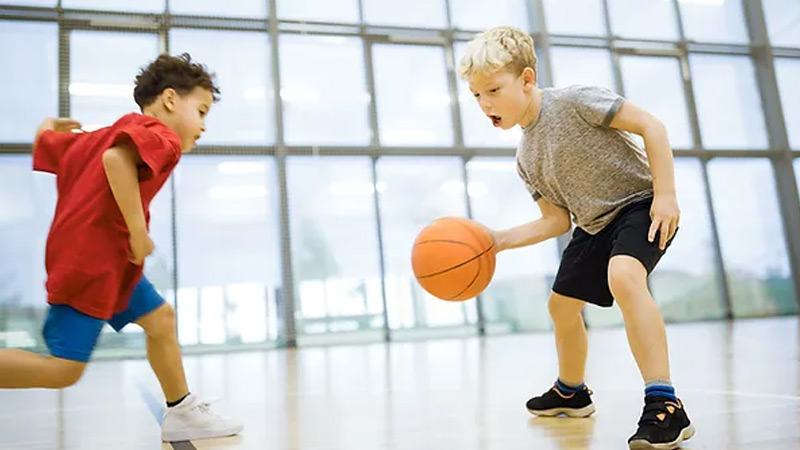
Source: barrencountyymca.org
The player count rule in youth basketball refers to the maximum number of players allowed on the court for a team during a game. The specific player count rule can vary depending on the organization or league governing the youth basketball program.
However, the most common player count rule for youth basketball is typically five players per team on the court at a time. This format is commonly known as “5-on-5” basketball.
It’s important to note that player count rules can differ based on the age group and level of play. In some cases, younger age groups may play with fewer players on the court, such as 3-on-3 or 4-on-4, to allow for more involvement and development of fundamental skills.
As players progress to higher age groups and skill levels, the player count typically increases to the standard 5-on-5 format.
To ensure you have the accurate player count rule for a specific youth basketball league or organization, it’s best to consult the rules and regulations provided by the governing body or speak with the coaches and officials involved in the program.
2. Personal fouls
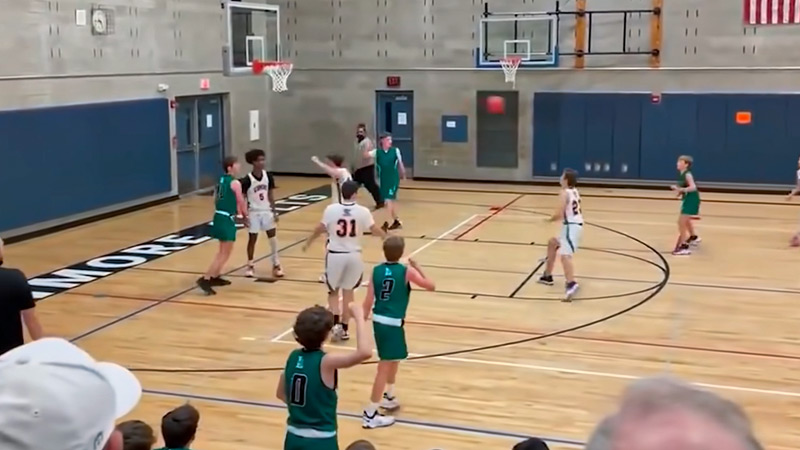
In youth basketball, personal fouls are a set of rules designed to regulate player conduct and maintain fair play during a game. Personal fouls occur when a player makes illegal physical contact with an opponent.
The specific rules and definitions of personal fouls can vary slightly depending on the league or organization, but here are some general guidelines:
Charging
Charging occurs when an offensive player runs into a stationary defender who has already established their position. The offensive player must avoid contact or adjust their path to avoid a charging foul.
Blocking
Blocking is the opposite of charging. It happens when a defender moves into the path of an offensive player who is already in motion. A blocking foul is called when the defender does not establish a position and prevents the offensive player from moving.
Holding
Holding refers to grabbing or restraining an opponent to impede their movement. This can occur when a player tries to prevent their opponent from moving or gaining an advantage. Holding is typically called if it significantly affects the opponent’s ability to play.
Reaching-in
Reaching-in is when a defender reaches across and makes contact with an offensive player while attempting to steal the ball. If the contact is deemed excessive or unfair, a personal foul may be called.
Slapping or striking
Slapping or striking involves hitting an opponent with the hand or arm. This can occur while reaching for the ball or as an intentional act of aggression. It is important to note that intentional striking is a more severe offense and may result in more severe consequences.
Illegal screens
Setting an illegal screen occurs when an offensive player does not establish a stationary position before making contact with a defender. Moving screens or screens with excessive contact are considered illegal and can lead to personal fouls.
Unsportsmanlike Conduct
Unsportsmanlike conduct includes any behavior that goes against the principles of fair play and respect for opponents and officials.
Examples include taunting, trash-talking, or excessive arguing with officials. Unsportsmanlike conduct can result in personal fouls or technical fouls, depending on the severity.
3. Double Teaming
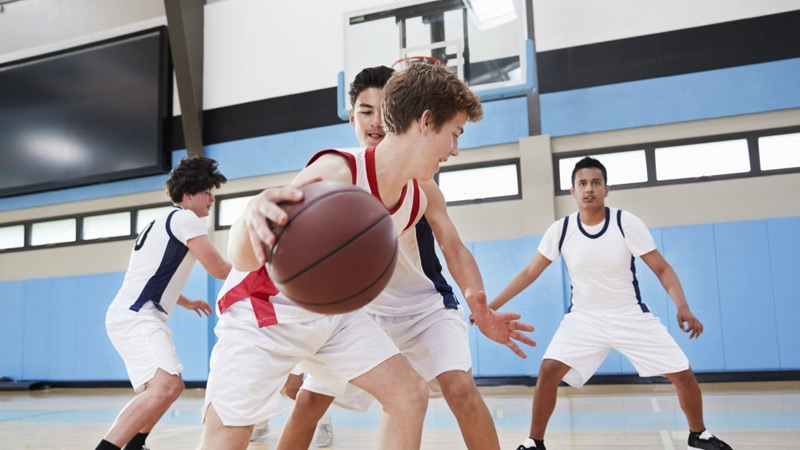
Source: southbayfor.org
In youth basketball, the double teaming rule refers to a defensive strategy where two defenders simultaneously guard a single offensive player who is in possession of the ball.
This defensive tactic is often employed to put additional pressure on the offensive player and potentially force a turnover or disrupt their scoring opportunities.
The specific rules regarding double teaming can vary depending on the league or organization governing the youth basketball games.
In some leagues, double-teaming may be allowed at any time, while in others, there may be restrictions or limitations on when and how double-teaming can occur.
Here are a few common variations and guidelines that may be implemented:
Time Limit
Some leagues enforce a time limit on how long defenders can double-team an offensive player. For example, they may allow a double team for a maximum of 5 seconds before one defender must disengage and return to guarding another player.
Court Area
Certain leagues may restrict the areas on the court where double-teaming is permitted. For instance, double-teaming may be allowed in the backcourt but prohibited once the offensive team crosses the midcourt.
Distance Restriction
In some cases, there might be a minimum distance requirement for the second defender before they can initiate a double team. This is to prevent overly aggressive or immediate trapping near the offensive player’s location.
The specific rules and regulations can differ between leagues and age groups, so it’s best to consult the guidelines provided by the governing organization or the specific league in which you are participating to understand the exact double-teaming rules applicable to your youth basketball games.
4. Jump Ball Rules
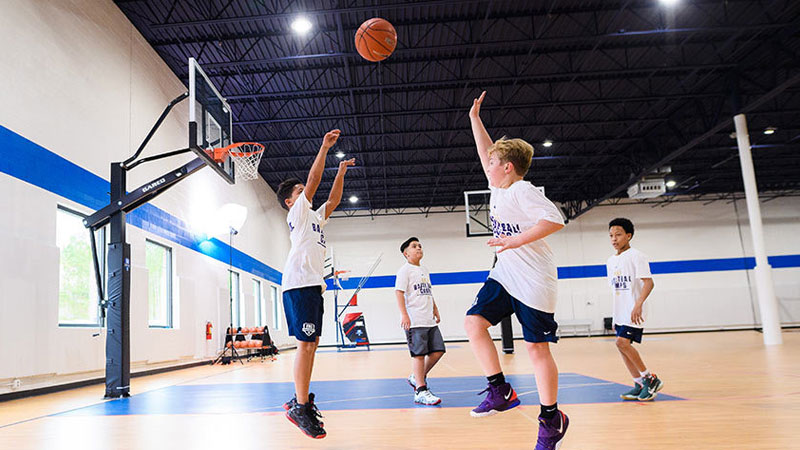
Source: ussportscamps.com
In youth basketball, the jump ball rule may vary depending on the league or organization. However, traditionally, the jump ball is used to start the game and resolve certain alternating-possession situations. Here are the general rules regarding the jump ball in youth basketball:
Start of the game
At the beginning of the game, a jump ball is conducted at the center circle between two opposing players (one from each team). The referee tosses the ball vertically between the two players, and they try to gain possession by tapping or catching the ball.
Alternating possession situations
In some leagues, instead of conducting a jump ball to start the game, a coin toss or another method is used to determine initial possession. After that, the possession arrow (a visual indicator) is used to determine which team gets the ball for alternating possession situations.
For example, if there is a tie-up or a held ball, the possession arrow determines which team gets the ball next.
5. 3-second Rule
The 3-second rule refers to a violation that occurs when an offensive player remains in the key or restricted area (also known as the paint) for more than three seconds continuously. The key is the painted rectangular area under the basket.
The rule is designed to prevent players from camping in the key for extended periods, which could potentially lead to an unfair advantage. The key purpose of the rule is to ensure that offensive players do not impede the defensive team’s ability to defend effectively.
If an offensive player stays in the key for more than three seconds, the referee will blow the whistle and signal a turnover or violation. The opposing team will be awarded possession of the basketball through a turnover, usually with an inbound pass from the sideline.
6. Double-Dribbles
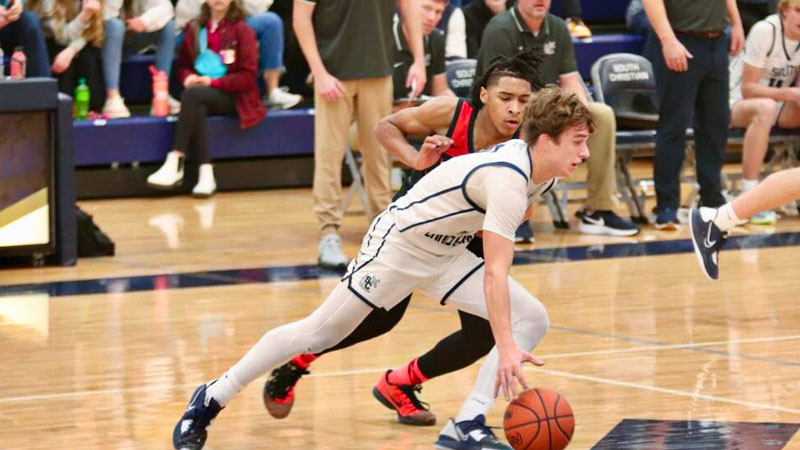
Source: michigansportsradio.com
The double-dribble rule refers to a violation that occurs when a player touches the ball with both hands simultaneously and then dribbles the ball again, or when a player stops dribbling, holds the ball, and then begins dribbling again.
This rule applies to both offensive and defensive players. Specifically, once a player picks up their dribble by stopping their dribbling motion and holds the ball, they are allowed to pass, shoot, or pivot on one foot, but they cannot dribble again.
If a player violates this rule by double-dribbling, it results in a turnover, and the opposing team is awarded possession of the ball.
7. 10-Second Violation Rule
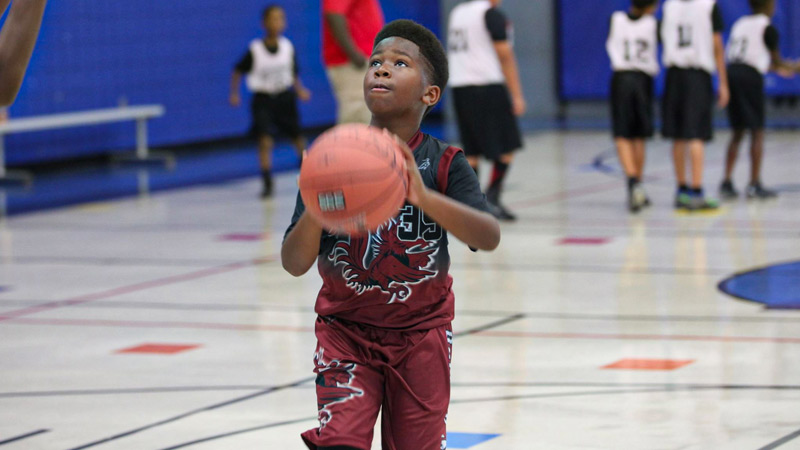
Source: cityofmesquite.com
In youth basketball, the 10-second violation rule is a rule that governs the amount of time an offensive team has to advance the ball past the half-court line.
The rule varies depending on the age and level of play, but generally, in most youth basketball leagues, teams have 10 seconds to bring the ball across the half-court line after gaining possession.
If the offensive team fails to advance the ball past the half-court line within the specified time, a 10-second violation is called, resulting in a turnover.
The opposing team is then awarded possession of the ball from the point of the violation, typically inbounding it from the sideline.
8. Backcourt Violation
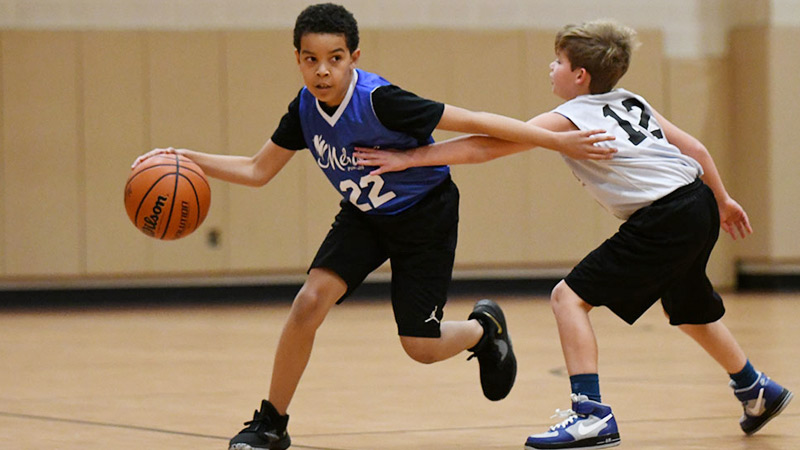
Source: cityofmebanenc.gov
The backcourt violation rule is a rule that determines when an offensive team is not allowed to return the ball to the backcourt once it has advanced the ball past the half-court line.
The specific details of the rule may vary depending on the league or organization, but I can provide a general explanation.
Typically, the backcourt violation rule states that once the offensive team has advanced the ball into the frontcourt, they are not allowed to pass or dribble the ball back into the backcourt.
The frontcourt refers to the area of the court that extends from the midcourt line to the baseline of the offensive team. The backcourt refers to the area of the court behind the midcourt line.
If an offensive player, while in possession of the ball, crosses the half-court line and then passes or dribbles the ball back into the backcourt, a backcourt violation is called.
This results in a turnover and the opposing team is awarded possession of the ball. The offensive team must then inbound the ball from the sideline or baseline, depending on the specific league or organization’s rules.
9. Scoring Rules
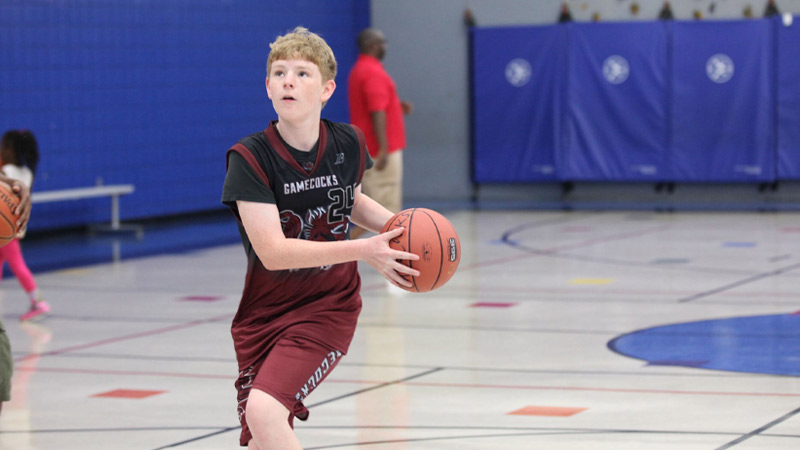
In youth basketball, scoring is generally based on the same fundamental principles as in adult basketball. The most common method of scoring in youth basketball is by shooting the ball into the opponent’s hoop, which is usually a 10-foot-tall basket.
The following are the basic scoring rules in youth basketball:
Field Goals
When a player successfully shoots the ball into the opponent’s basket, it is called a field goal. In most cases, a field goal is worth two points.
Three-Pointers
If a player shoots the ball from beyond the three-point line (usually marked on the court), and it goes through the hoop successfully, it is considered a three-pointer. A three-pointer is typically worth three points.
Free Throws
When a player is fouled by an opponent and is awarded free throws, they have the opportunity to score without any defensive pressure. Each successful free throw is usually worth one point. Free throws are taken from the free-throw line, located 15 feet away from the hoop.
Fouls
In addition to the scoring rules, fouls can also impact scoring. When a player commits a foul, the opposing team may be awarded free throws or, in some cases, the team that was fouled may inbound the ball from the sideline.
It’s worth noting that the specific scoring rules and point values may vary depending on the age group, level of play, or specific league or organization governing the youth basketball games. The rules may also differ slightly between different countries or regions.
10. Traveling Rules
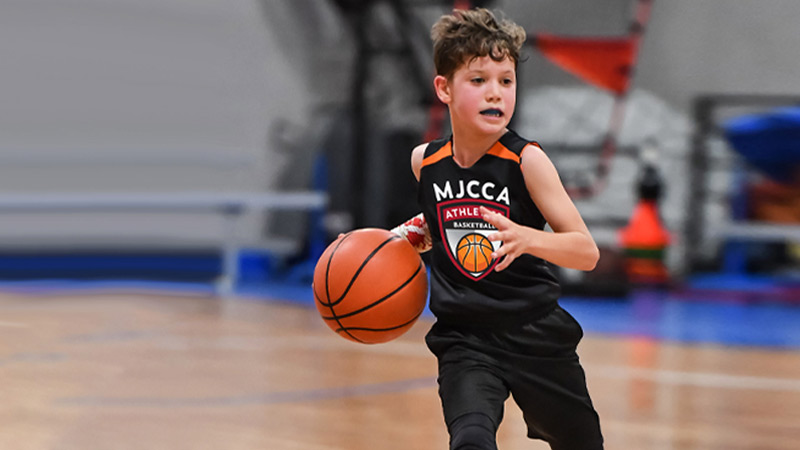
Source: atlantajcc.org
In youth basketball, the traveling rule is an important aspect of the game that governs how a player can move with the ball. The rule is designed to prevent players from gaining an unfair advantage by taking too many steps without dribbling or by dragging their pivot foot.
According to the traveling rule, a player who catches the ball while standing still or while moving can pivot on one foot without dribbling, but must release the ball to the floor before lifting the pivot foot.
Once the pivot foot is lifted, the player must pass, shoot, or dribble the ball before taking another step.
If a player moves one foot or both feet in any direction without properly releasing the ball to the floor, it is considered a traveling violation.
This means that the player has taken too many steps without dribbling or has lifted the pivot foot before releasing the ball, resulting in a turnover and possession of the ball awarded to the opposing team.
It’s important to note that the specific rules regarding traveling may vary slightly depending on the league, age group, or level of play.
Therefore, it’s always a good idea to familiarize yourself with the specific regulations of the organization or league in which you are participating.
FAQs
What is the traveling rule in youth basketball?
The traveling rule in youth basketball governs how a player can move with the ball. It states that a player who catches the ball while standing still or while moving can pivot on one foot without dribbling. However, the player must release the ball to the floor before lifting the pivot foot. Failure to do so results in a traveling violation and a turnover.
What is the three-second rule in youth basketball?
The three-second rule in youth basketball prevents an offensive player from camping in the paint for an extended period. According to this rule, an offensive player cannot remain in the opposing team’s key (restricted area) for more than three seconds unless they are actively guarding an opponent or are in the process of shooting.
How does the shot clockwork in youth basketball?
The shot clock is not typically used in most youth basketball leagues, especially at lower age levels. However, in leagues where shot clocks are implemented, it is a timer that limits the amount of time a team has possession of the ball before attempting a shot. It encourages teams to play with pace and prevents excessive stalling.
What is the double dribble rule in youth basketball?
The double dribble rule prohibits a player from dribbling the ball with two hands simultaneously or stopping a dribble and then starting again. Once a player picks up their dribble, they must pass or shoot the ball; otherwise, it results in a turnover.
Can players block or steal the ball from an opponent in youth basketball?
Yes, players are allowed to block or steal the ball from an opponent in youth basketball. However, excessive or dangerous contact, such as hitting an opponent’s arm during a shot attempt, is generally not allowed and can result in a foul. Players should aim for clean and legal defensive maneuvers when attempting to block or steal the ball.
Wrapping Up
The rules of the game are essential for young basketball players to develop their skills, play with fairness, and stay safe on the court. The top 10 youth basketball rules covered in this guide provide a solid foundation for players, parents, and coaches alike.
By adhering to these rules, players can enhance their understanding of the game, improve their technique, and enjoy the sport to the fullest.
So, lace up your sneakers, grab a basketball, and embrace the excitement of youth basketball while respecting these fundamental rules of the game. Best wishes.

